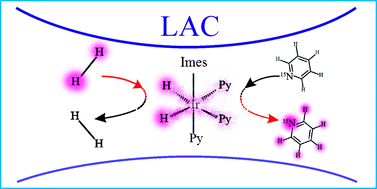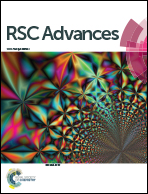Transfer of SABRE-derived hyperpolarization to spin-1/2 heteronuclei†
Abstract
In this paper, we describe a method of hyper-polarizing “insensitive” Nuclear Magnetic Resonance (NMR) nuclei by exploiting the SABRE (Signal Amplification By Reversible Exchange) technique and transferring spin order from protons originating from parahydrogen. We demonstrate that hyperpolarization transfer is due to a coherent mechanism, which is operative at (i) very low magnetic field; (ii) geomagnetic field; (iii) high field in the presence of a suitable radiofrequency-excitation scheme. Experiments are performed using 15N-labelled pyridine as the SABRE substrate; NMR enhancements achieved for 15N nuclei are more than 1000 for free pyridine in solution and more than 20 000 for pyridine bound to the SABRE complex. High-field SABRE experiments are particularly important for enhancing the sensitivity of NMR methods: they enable strong signal enhancements and avoid technically demanding field-cycling. Furthermore, such experiments use very low power for NMR excitation and make feasible continuous re-hyperpolarization of the substrate in high-field experiments: polarization can be quickly restored to the maximal level within only 15 seconds with the result that polarization levels stay constant over several hundred experiments. The techniques outlined are applicable to hyper-polarizing spin-1/2 hetero-nuclei, such as 13C, 19F, 31P, etc. Development of such methods opens new avenues in NMR spectroscopy and imaging, which were out of reach for sensitivity reasons.


 Please wait while we load your content...
Please wait while we load your content...